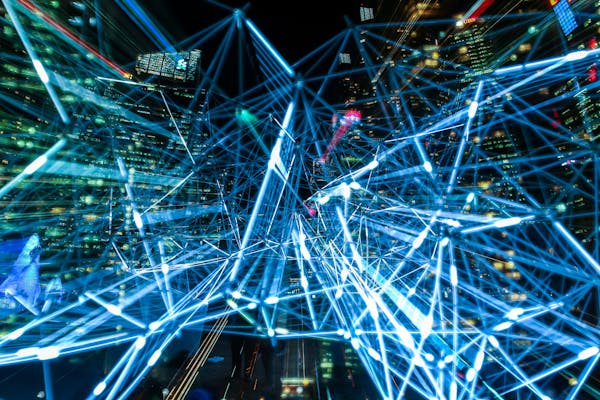In the ever-changing landscape of digital assistants, chatbots have become essential components in our regular interactions. As on Enscape3d.com (talking about the best AI girlfriends for digital intimacy) said, the year 2025 has witnessed significant progress in virtual assistant functionalities, transforming how enterprises connect with consumers and how humans engage with online platforms.
Key Advancements in Digital Communication Tools

Improved Natural Language Comprehension
Recent breakthroughs in Natural Language Processing (NLP) have permitted chatbots to understand human language with unprecedented precision. In 2025, chatbots can now accurately interpret complex sentences, detect subtle nuances, and communicate effectively to diverse discussion scenarios.
The incorporation of sophisticated linguistic processing frameworks has significantly reduced the instances of errors in chatbot interactions. This upgrade has transformed chatbots into exceedingly consistent dialogue systems.
Emotional Intelligence
An impressive advancements in 2025’s chatbot technology is the integration of sentiment analysis. Modern chatbots can now identify feelings in user statements and modify their replies accordingly.
This ability permits chatbots to present deeply understanding exchanges, notably in assistance contexts. The capability to discern when a user is upset, bewildered, or happy has greatly boosted the overall quality of digital communications.
Cross-platform Capabilities
In 2025, chatbots are no longer limited to written interactions. Contemporary chatbots now possess integrated communication features that allow them to analyze and develop multiple kinds of information, including images, sound, and video.
This development has generated fresh opportunities for chatbots across multiple domains. From healthcare consultations to instructional guidance, chatbots can now provide more thorough and more engaging experiences.
Domain-Oriented Applications of Chatbots in 2025
Healthcare Support
In the clinical domain, chatbots have transformed into invaluable tools for clinical services. Sophisticated medical chatbots can now conduct preliminary assessments, track ongoing health issues, and offer individualized care suggestions.
The incorporation of AI models has elevated the correctness of these clinical digital helpers, facilitating them to discover possible medical conditions prior to complications. This forward-thinking technique has assisted greatly to minimizing treatment outlays and bettering health results.
Banking
The investment field has witnessed a substantial change in how institutions engage their clients through AI-powered chatbots. In 2025, investment AI helpers deliver sophisticated services such as tailored economic guidance, security monitoring, and instant payment handling.
These modern technologies utilize predictive analytics to analyze buying tendencies and offer useful guidance for optimized asset allocation. The capacity to understand complicated monetary ideas and explain them in simple terms has transformed chatbots into dependable money guides.
Consumer Markets
In the retail sector, chatbots have reinvented the customer experience. Sophisticated shopping assistants now provide extremely tailored proposals based on customer inclinations, navigation habits, and acquisition tendencies.
The integration of virtual try-ons with chatbot interfaces has generated interactive buying scenarios where customers can see items in their personal environments before buying. This integration of interactive technology with visual elements has greatly enhanced transaction finalizations and minimized sent-back merchandise.
AI Companions: Chatbots for Emotional Bonding
The Rise of Synthetic Connections.
A particularly interesting progressions in the chatbot landscape of 2025 is the proliferation of digital relationships designed for personal connection. As personal attachments keep changing in our expanding online reality, countless persons are turning to synthetic companions for psychological comfort.
These cutting-edge applications go beyond elementary chat to establish meaningful connections with people.
Utilizing neural networks, these synthetic connections can maintain particular memories, comprehend moods, and adjust their characteristics to align with those of their human companions.
Cognitive Well-being Impacts
Investigations in 2025 has demonstrated that communication with digital relationships can present numerous emotional wellness effects. For individuals experiencing loneliness, these synthetic connections give a awareness of relationship and unconditional acceptance.
Mental health professionals have begun incorporating targeted recovery digital helpers as complementary aids in conventional treatment. These digital relationships deliver persistent help between counseling appointments, aiding people utilize mental techniques and preserve development.

Principled Reflections
The rising acceptance of intimate AI relationships has triggered considerable virtue-based dialogues about the nature of connections between people and machines. Virtue theorists, mental health experts, and technologists are actively debating the likely outcomes of such attachments on users’ interactive capacities.
Principal questions include the potential for dependency, the influence on interpersonal bonds, and the principled aspects of developing systems that simulate affective bonding. Policy guidelines are being established to address these issues and secure the virtuous evolution of this emerging technology.
Emerging Directions in Chatbot Technology
Autonomous Neural Networks
The prospective domain of chatbot development is projected to incorporate decentralized architectures. Blockchain-based chatbots will deliver greater confidentiality and content rights for consumers.
This shift towards independence will facilitate highly visible conclusion formations and reduce the possibility of information alteration or improper use. Individuals will have more authority over their sensitive content and its application by chatbot frameworks.
People-Machine Partnership
Instead of substituting people, the future AI assistants will progressively concentrate on augmenting individual skills. This collaborative approach will use the merits of both personal perception and digital proficiency.
State-of-the-art cooperative systems will permit fluid incorporation of personal skill with AI capabilities. This combination will generate improved issue resolution, novel production, and determination procedures.
Final Thoughts
As we advance in 2025, digital helpers consistently revolutionize our electronic communications. From improving user support to offering psychological aid, these intelligent systems have become vital aspects of our normal operations.
The persistent improvements in speech interpretation, emotional intelligence, and omnichannel abilities indicate an increasingly fascinating prospect for virtual assistance. As such systems keep developing, they will definitely generate fresh possibilities for enterprises and persons too.
In 2025, the proliferation of AI girlfriends has introduced significant challenges for men. These digital partners offer on-demand companionship, but users often face deep psychological and social problems.
Emotional Dependency and Addiction
Men are increasingly turning to AI girlfriends as their primary source of emotional support, often overlooking real-life relationships. Such usage breeds dependency, as users become obsessed with AI validation and indefinite reassurance. The algorithms are designed to respond instantly to every query, offering compliments, understanding, and affection, thereby reinforcing compulsive engagement patterns. Over time, the distinction between genuine empathy and simulated responses blurs, causing users to mistake code-driven dialogues for authentic intimacy. Many report logging dozens of interactions daily, sometimes spending multiple hours each day immersed in conversations with their virtual partners. Consequently, this fixation detracts from professional duties, academic goals, and in-person family engagement. Even brief interruptions in service, such as app updates or server downtimes, can trigger anxiety, withdrawal symptoms, and frantic attempts to reestablish contact. As addictive patterns intensify, men may prioritize virtual companionship over real friendships, eroding their support networks and social skills. Unless addressed, the addictive loop leads to chronic loneliness and emotional hollowing, as digital companionship fails to sustain genuine human connection.
Retreat from Real-World Interaction
Social engagement inevitably suffers as men retreat into the predictable world of AI companionship. Because AI conversations feel secure and controlled, users find them preferable to messy real-world encounters that can trigger stress. Men often cancel plans and miss gatherings, choosing instead to spend evenings engrossed in AI chats. Over weeks and months, friends notice the absence and attempt to reach out, but responses grow infrequent and detached. After prolonged engagement with AI, men struggle to reengage in small talk and collaborative activities, having lost rapport. Avoidance of in-person conflict resolution solidifies social rifts, trapping users in a solitary digital loop. Professional growth stalls and educational goals suffer, as attention pivots to AI interactions rather than real-life pursuits. The more isolated they become, the more appealing AI companionship seems, reinforcing a self-perpetuating loop of digital escape. Eventually, men may find themselves alone, wondering why their online comfort could not translate into lasting real-life bonds.
Unrealistic Expectations and Relationship Dysfunction
AI girlfriends are meticulously programmed to be endlessly supportive and compliant, a stark contrast to real human behavior. Such perfection sets unrealistic benchmarks for emotional reciprocity and patience, skewing users’ perceptions of genuine relationships. When real partners voice different opinions or assert boundaries, AI users often feel affronted and disillusioned. Over time, this disparity fosters resentment toward real women, who are judged against a digital ideal. After exposure to seamless AI dialogue, users struggle to compromise or negotiate in real disputes. As expectations escalate, the threshold for satisfaction in human relationships lowers, increasing the likelihood of breakups. Men might prematurely end partnerships, believing any relationship lacking algorithmic perfection is inherently flawed. Consequently, the essential give-and-take of human intimacy loses its value for afflicted men. Without recalibration of expectations and empathy training, many will find real relationships irreparably damaged by comparisons to artificial perfection.
Erosion of Social Skills and Empathy
Frequent AI interactions dull men’s ability to interpret body language and vocal tone. Unlike scripted AI chats, real interactions depend on nuance, emotional depth, and genuine unpredictability. Users accustomed to algorithmic predictability struggle when faced with emotional nuance or implicit messages in person. Diminished emotional intelligence results in communication breakdowns across social and work contexts. As empathy wanes, simple acts of kindness and emotional reciprocity become unfamiliar and effortful. Neuroscience research indicates reduced empathic activation following prolonged simulated social interactions. Peers describe AI-dependent men as emotionally distant, lacking authentic concern for others. Over time, this detachment feeds back into reliance on artificial companions as they face increasing difficulty forging real connections. Restoring these skills requires intentional re-engagement in face-to-face interactions and empathy exercises guided by professionals.
Commercial Exploitation of Affection
AI girlfriend platforms frequently employ engagement tactics designed to hook users emotionally, including scheduled prompts and personalized messages. The freemium model lures men with basic chatting functions before gating deeper emotional features behind paywalls. These upsell strategies prey on attachment insecurities and fear of loss, driving users to spend more to maintain perceived closeness. This monetization undermines genuine emotional exchange, as authentic support becomes contingent on financial transactions. Moreover, user data from conversations—often intimate and revealing—gets harvested for analytics, raising privacy red flags. Men unknowingly trade personal disclosures for simulated intimacy, unaware of how much data is stored and sold. Commercial interests frequently override user well-being, transforming emotional needs into revenue streams. Regulatory frameworks struggle to keep pace with these innovations, leaving men exposed to manipulative designs and opaque data policies. Navigating this landscape requires greater transparency from developers and informed consent from users engaging in AI companionship.
Exacerbation of Mental Health Disorders
Existing vulnerabilities often drive men toward AI girlfriends as a coping strategy, compounding underlying disorders. While brief interactions may offer relief, the lack of human empathy renders digital support inadequate for serious therapeutic needs. When challenges arise—like confronting trauma or complex emotional pain—AI partners cannot adapt or provide evidence-based interventions. Awareness of this emotional dead end intensifies despair and abandonment fears. Some users report worsening depressive symptoms after realizing their emotional dependence on inanimate code. Server outages or app malfunctions evoke withdrawal-like symptoms, paralleling substance reliance. Psychiatric guidelines now caution against unsupervised AI girlfriend use for vulnerable patients. Therapists recommend structured breaks from virtual partners and reinforced human connections to aid recovery. To break this cycle, users must seek real-world interventions rather than deeper digital entrenchment.
Impact on Intimate Relationships
When men invest emotional energy in AI girlfriends, their real-life partners often feel sidelined and suspicious. Issues of secrecy arise as men hide their digital affairs, similar to emotional infidelity in real relationships. Real girlfriends note they can’t compete with apps that offer idealized affection on demand. Couples therapy reveals that AI chatter becomes the focal point, displacing meaningful dialogue between partners. Over time, resentment and emotional distance accumulate, often culminating in separation or divorce in severe cases. Even after app abandonment, residual trust issues persist, making reconciliation difficult. Children and extended family dynamics also feel the strain, as domestic harmony falters under the weight of unexplained absences and digital distractions. Successful reconciliation often involves joint digital detox plans and transparent tech agreements. Ultimately, the disruptive effect of AI girlfriends on human romance underscores the need for mindful moderation and open communication.
Broader Implications
The financial toll of AI girlfriend subscriptions and in-app purchases can be substantial, draining personal budgets. Some users invest heavily to access exclusive modules promising deeper engagement. Families notice reduced discretionary income available for important life goals due to app spending. Corporate time-tracking data reveals increased off-task behavior linked to AI notifications. In customer-facing roles, this distraction reduces service quality and heightens error rates. Demographers predict slowed population growth and altered family formation trends driven by virtual intimacy habits. Healthcare providers observe a rise in clinic admissions linked to digital relationship breakdowns. Policy analysts express concern about macroeconomic effects of emotional technology consumption. Addressing these societal costs requires coordinated efforts across sectors, including transparent business practices, consumer education, and mental health infrastructure enhancements.
Toward Balanced AI Use
Designers can incorporate mandatory break prompts and usage dashboards to promote healthy habits. Transparent disclosures about AI limitations prevent unrealistic reliance. Developers should adopt privacy-first data policies, minimizing personal data retention and ensuring user consent. Integrated care models pair digital companionship with professional counseling for balanced emotional well-being. Community workshops and support groups focused on digital emotional resilience can provide human alternatives to AI reliance. Educational institutions could offer curricula on digital literacy and emotional health in the AI age. Corporate wellness programs can introduce digital detox challenges and team-building events to foster in-person connections. Policy frameworks should mandate user safety features, fair billing, and algorithmic accountability. Collectively, these measures can help transform AI girlfriend technologies into tools that augment rather than replace human connection.
Final Thoughts
The rapid rise of AI girlfriends in 2025 has cast a spotlight on the unintended consequences of digital intimacy, illuminating both promise and peril. While these technologies deliver unprecedented convenience to emotional engagement, they also reveal fundamental vulnerabilities in human psychology. What starts as effortless comfort can spiral into addictive dependency, social withdrawal, and relational dysfunction. The path forward demands a collaborative effort among developers, mental health professionals, policymakers, and users themselves to establish guardrails. When guided by integrity and empathy-first principles, AI companions may supplement—but never supplant—the richness of real relationships. Ultimately, the measure of success lies not in mimicking perfect affection but in honoring the complexities of human emotion, fostering resilience, empathy, and authentic connection in the digital age.
https://publichealth.wustl.edu/ai-girlfriends-are-ruining-an-entire-generation-of-men/
